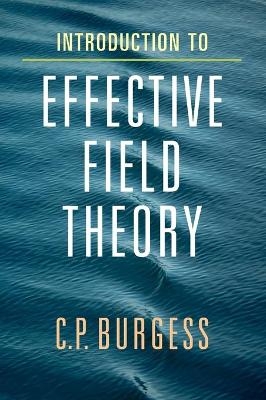
Introduction to Effective Field Theory
Cambridge University Press (Verlag)
978-0-521-19547-8 (ISBN)
Using examples from across the sub-disciplines of physics, this introduction shows why effective field theories are the language in which physical laws are written. The tools of effective field theory are demonstrated using worked examples from areas including particle, nuclear, atomic, condensed matter and gravitational physics. To bring the subject within reach of scientists with a wide variety of backgrounds and interests, there are clear physical explanations, rigorous derivations, and extensive appendices on background material, such as quantum field theory. Starting from undergraduate-level quantum mechanics, the book gets to state-of-the-art calculations using both relativistic and nonrelativistic few-body and many-body examples, and numerous end-of-chapter problems derive classic results not covered in the main text. Graduate students and researchers in particle physics, condensed matter physics, nuclear physics, string theory, and mathematical physics more generally, will find this book ideal for both self-study and for organized courses on effective field theory.
C. P. Burgess is a professor at both McMaster University and the Perimeter Institute for Theoretical Physics, and co-author of the book The Standard Model: A Modern Primer. He is a Fellow of the Royal Society of Canada and has been awarded the CAP/CRM medal for Theoretical Physics. After initially learning about effective field theories from his PhD supervisor, Nobel Laureate Steven Weinberg, he is now a world expert on their applications throughout physics.
Part I. Theoretical framework; 1. Decoupling and hierarchies of scale; 2. Effective actions; 3. Power counting and matching; 4. Symmetries; 5. Boundaries; Part II. Relativistic applications; 7. Conceptual issues (relativistic systems); 8. QCD and chiral perturbation theory; 9. The Standard Model as an effective theory; 10. General Relativity as an effective theory; Part III. Nonrelativistic Applications; 11. Conceptual issues (nonrelativistic systems); 12. Electrodynamics of non-relativistic particles; 13. First-quantized methods; Part IV. Many-body applications; 14. Goldstone bosons again; 15. Degenerate systems; 16. EFTs and open systems; Appendix A Conventions and units; Appendix B Momentum eigenstates and scattering; Appendix C Quantum field theory: a cartoon; Appendix D Further reading; References; Index.
| Erscheinungsdatum | 15.01.2021 |
|---|---|
| Zusatzinfo | Worked examples or Exercises |
| Verlagsort | Cambridge |
| Sprache | englisch |
| Maße | 183 x 260 mm |
| Gewicht | 1520 g |
| Themenwelt | Naturwissenschaften ► Physik / Astronomie ► Atom- / Kern- / Molekularphysik |
| Naturwissenschaften ► Physik / Astronomie ► Festkörperphysik | |
| Naturwissenschaften ► Physik / Astronomie ► Hochenergiephysik / Teilchenphysik | |
| ISBN-10 | 0-521-19547-0 / 0521195470 |
| ISBN-13 | 978-0-521-19547-8 / 9780521195478 |
| Zustand | Neuware |
| Haben Sie eine Frage zum Produkt? |
aus dem Bereich


